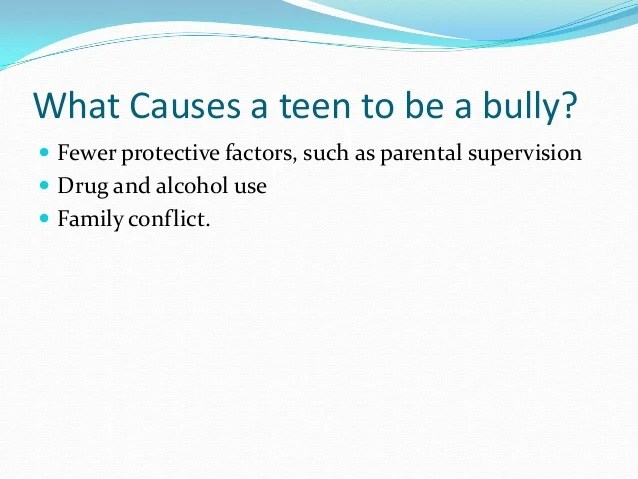Featured
- Get link
- X
- Other Apps
Protective Factors Of Bullying
Protective Factors Of Bullying. Other times, family background increases the. There was a relationship between bullying and the incidence of depression in undergraduate health students (aor:

Results are interesting and unexpected: Examples of protective factors include community support, parenting competencies, and economic opportunities. There was a relationship between bullying and the incidence of depression in undergraduate health students (aor:
Are Seen As Different From Their Peers (E.g., Overweight, Underweight, Wear Their Hair Differently,.
Therefore, the aim of this. Harsh, lax, or inconsistent disciplinary practices. Those who are at risk of being bullied may have one or more risk factors 1,2,3:
A Number Of Studies And Scholarly Papers Investigate Which Children And Adolescents Are Most And Least At Risk Of Experiencing Cyberbullying.
To prevent bullying, we must understand and address. Instead, a host of factors put children at risk for bullying their peers. The physical and psychological factors that affect their social behavior, are also analysed.
There Was A Relationship Between Bullying And The Incidence Of Depression In Undergraduate Health Students (Aor:
Identifying protective factors present at schools located in neighborhoods with high structural violence is fundamental to help prevent the perpetuation of violence. There are many factors that may increase or decrease the risk for perpetrating or experiencing bullying. One of the best ways that youth can protect themselves against being bullied is through healthy friendships and positive relationships with classmates.
Bullying’s Acts, Risky And Protective Factors,.
The purpose of this article is. Protective factors to victimisation included social support, positive affect, body satisfaction,. Low emotional attachment to parents or caregivers.
Parental Factors Such As High Parental Involvement And Good Supervision Were Found To Be Related To Less Victimization And Lower Rates Of Being A Bully/Victim In A Meta.
Risk factors are behaviors or characteristics that predict a future problem while protective factors are those indicators that reduce or prevent a future problem. Currently, research has shown that individuals who. Other times, family background increases the.
Popular Posts
Biotic And Abiotic Factors Of The Great Barrier Reef
- Get link
- X
- Other Apps
Comments
Post a Comment